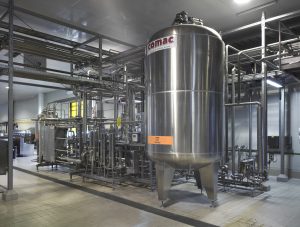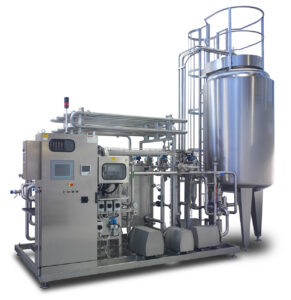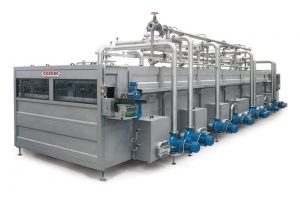Per “pastorizzazione” si intende il processo termico (combinazione di temperatura e tempo) attraverso il quale rendere inattivi i microrganismi potenzialmente patogeni contenuti nel prodotto ed aumentare quindi in tutta sicurezza la shelf-life del prodotto stesso.

Per “pastorizzazione” si intende il processo termico (combinazione di temperatura e tempo) attraverso il quale rendere inattivi i microrganismi potenzialmente patogeni contenuti nel prodotto ed aumentare quindi in tutta sicurezza la shelf-life del prodotto stesso.
Mentre le birre artigianali, che per loro natura hanno una distribuzione territoriale limitata e quindi tempi più brevi di fruizione del prodotto, in genere non richiedono la pastorizzazione, mantenendo il prodotto “vivo”, le birre prodotte su larga scala sono quasi sempre soggette a trattamento termico, che deve comunque essere il meno invasivo possibile, per salvaguardarne le caratteristiche organolettiche e nutrizionali.

La pastorizzazione flash pastorizza il prodotto che successivamente verrà confezionato in bottiglie di vetro, oppure pet oppure lattine oppure kegs per la distribuzione della birra alla spina. Il prodotto viene mantenuto per un tempo molto limitato ( tipicamente 20 sec) ad una temperatura di 71/72°C. Entrambi i parametri sono regolabili per raggiungere le unità di pastorizzazione richieste.
Uno scambiatore a piastre a 3 stadi provvede al riscaldamento ed al successivo raffreddamento del prodotto: il primo riscaldamento avviene prelevando calore dalla birra già pastorizzata, cui segue il riscaldamento fino alla temperatura di pastorizzazione impostata, la sosta termica, un primo raffreddamento (appunto in scambio termico con la birra non ancora pastorizzata) ed un raffreddamento finale.
Questo ciclo consente un recupero termico fino al 95%.
Il prodotto pastorizzato e raffreddato viene inviato ad un serbatoio di stoccaggio pressurizzato e da questo alla unità di riempimento.

La pastorizzazione in tunnel viene utilizzata sul prodotto precedentemente confezionato in bottiglie di vetro o lattine, quindi l’azione termica si applica anche al contenitore, al tappo o coperchio, ai gas contenuti nello spazio di testa.
La temperatura di pastorizzazione viene mantenuta intorno ai 62°C ed il tempo di ciclo intorno agli 8 minuti.
La temperatura del contenitore viene innalzata gradualmente con docce di acqua a temperatura crescente, mantenuta per il tempo previsto alla temperatura di pastorizzazione e poi gradualmente abbassata con docce di acqua a temperatura decrescente.
I bagni incrociati consentono di limitare il consumo energetico (l’acqua riscaldata dalle bottiglie in fase di raffreddamento viene usata per scaldare le bottiglie e viceversa).
COMAC produce flash pastorizzatori di capacità fino a 50.000 lph e pastorizzatori a tunnel a singolo o doppio piano in funzione della produzione oraria e del diametro del contenitore.
Vantiamo numerose installazioni in tutto il mondo.












